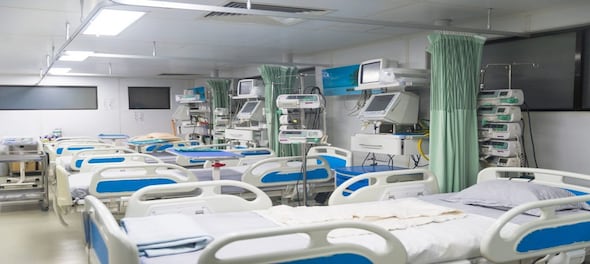
India approved the National Medical Device Policy 2023 on Wednesday. This policy is aimed at providing a boost to the manufacturing of medical devices in the country. The policy is expected to help the medical devices sector grow from present $11 billion to $50 billion in the next five years.
The government also hopes to enhance domestic manufacturing under this National Medical Devices policy to bring down the import dependence on such devices, which currently stands at 70-80 percent of the demand. During a meeting on Wednesday, the Union Cabinet also approved the establishment of 157 new nursing colleges at a cost of Rs 1,570 crore in co-location with existing medical colleges. Read more about cabinet decision here
 INDIA: MEDICAL DEVICE IMPORTS (in crore)
INDIA: MEDICAL DEVICE IMPORTS (in crore)What the National Medical Device Policy aims at?
The 38-page policy outlines a roadmap for how the government can accelerate growth in the medical device sector. It focuses on increasing innovation, research, and production capacity. The policy will also provide facilities for testing, allowing for faster diagnosis of diseases and access to more accurate and affordable treatments.
This policy aims to increase India's share in the international medical device market from the current 1.5 percent to 10-12 percent over the next 10 years, which would amount to $100-300 billion. The policy also calls for the development of at least 25 futuristic medical technologies in India.
In addition, the policy seeks to promote the manufacture of critical components related to cancer treatment, and imaging technologies such as ultrasound, MRI, molecular imaging, and PCR, which are currently imported from other countries.
ALSO READ | Healthcare in the era of AI — Illumina Asia-Pac medical head on the expanded scope of precision medicine
To achieve these goals, the policy envisions the creation of 50 clusters where medical devices can be tested rapidly, which will aid in developing and producing new devices. Experts in the field will be trained separately, with a special curriculum prepared at the higher education level. Doctors, technicians, service engineers, and other personnel will receive special training to enhance their skills.
This move is expected to create more jobs and increase the competitiveness of the Indian medical device industry, while also improving access to high-quality medical devices for the country's citizens.
The policy aims to promote the growth of the sector by focusing on accessibility, affordability, safety, and quality. It also seeks to streamline regulatory processes, harmonise with global standards, and stimulate the development of local manufacturing with private-sector investments.
ALSO READ | Blood pressure, cardiac, antibiotics, multivitamins, probiotics and more — 48 drugs fail latest quality test
The new framework for the medical devices manufacturing sector aims to reduce import dependence from 80 percent to 30 percent in 10 years and make India a top-five global manufacturing hub for medical devices by 2047, addressing a long-standing demand from the industry. So far, the medical devices sector in India has been regulated under the Drugs and Cosmetics Act of 1940.
(Edited by : Sudarsanan Mani)
First Published: Apr 26, 2023 4:01 PM IST
Check out our in-depth Market Coverage, Business News & get real-time Stock Market Updates on CNBC-TV18. Also, Watch our channels CNBC-TV18, CNBC Awaaz and CNBC Bajar Live on-the-go!


BJP is planning to ban RSS, says Shiv Sena (UBT) chief Uddhav Thackeray
May 18, 2024 8:01 PM
Punjab Lok Sabha elections: Complete list of Congress candidates
May 18, 2024 4:08 PM
Punjab Lok Sabha elections: Check full list of AAP candidates and constituencies
May 18, 2024 12:59 PM
PM Modi, Rahul Gandhi election rallies in Delhi today: Here are the routes to avoid
May 18, 2024 11:28 AM

